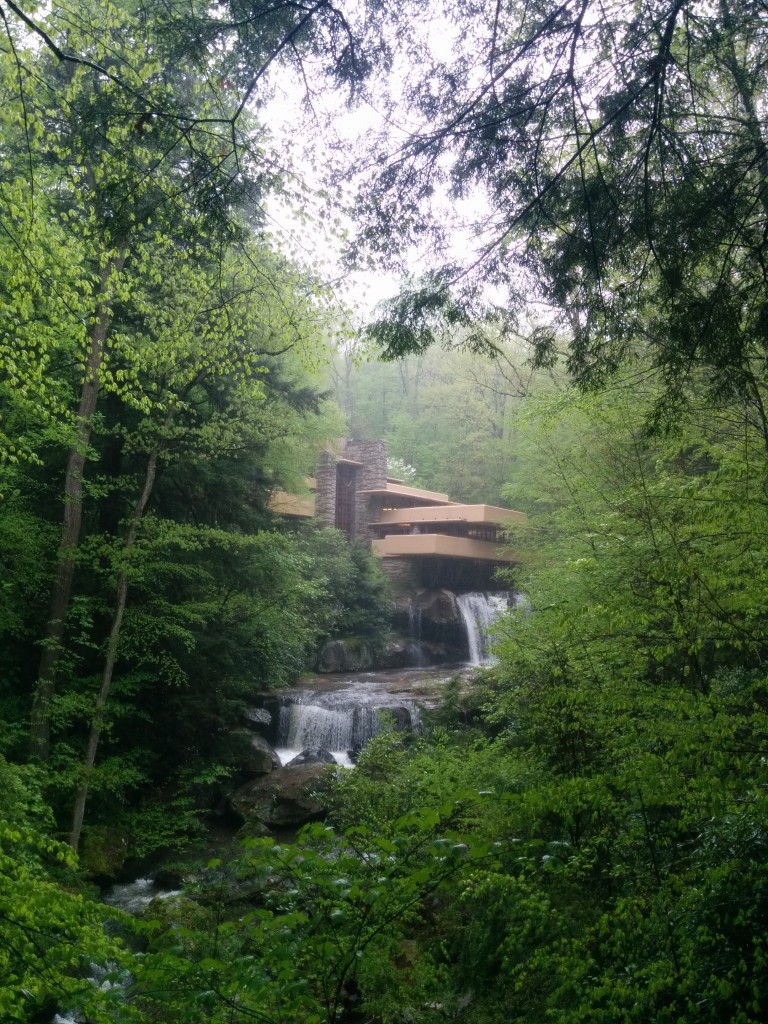After a late flight into Pittsburgh, we had an early start loading in to our very stylish bus for the drive out to Frank Loyd Wright’s Fallingwater. Fallingwater is spectacular, there is no better way to describe this building – sited over the Bear Run River the building pulls no punches, with expansive cantilevering balconies projecting over the water fall below it is about as dramatic as architecture gets. Spatially and organisationally Fallingwater echoes many of the moves of Unity Temple, directing you through a sequence of spatial compressions and expansions as you spiral via multiple stairs through the principal spaces in the house – although with less drama or organisational innovation than the earlier project.

For many of us this was a big tick against our archi-tourist bucket list and it seems that for many others this was also the case. We arrived at the same time as four school buses, to be mustered through the visitors centre, and then onto the organised tour with near military efficiency. We are told that Ed Kaufman, son of the of the original clients, donated the building and all of it’s contents to the Western Pennsylvania Conservancy in 1963. The conservancy has maintained the original furnishings allowing for a glimpse of the while building as FLW originally intended and as the Kaufman’s had lived with.
The contrast with our earlier visit to the Farnsworth house is striking; Mies and Wright, arguably the most influential of all American architects, yet Wright seems to have captured the public imagination, while Mies and his most famous residential project remain a niche interest. This may be something to do with their personalities. Famously brash, confident and working his way up from nothing, Wright seems to fit the American ideal of the architect, whereas Mies by all accounts was reserved, intellectual and guarded his privacy. Perhaps more importantly, while Fallingater and the Farnsworth house were completed within 10 years of one another, and were equally innovative and shocking where completed, Meisian ideas and aesthetics have become ubiquitous, to the point where many of his buildings (particularly at the IIT Campus) now seem mundane and pedestrian. Fallingwater retains its ability to inspire both for its compositional spectacle, but also because of its singularity – there is simply no other house like it in the world.
After Fallingwater, we pile back into the bus to complete the road trip to New York. After many hours, a little karaoke, and some spectacular moves from Phil, we catch our first glimpse of New York City. Driving into the city for this little party of exhausted travellers was amazing – all the more so for the great dance moves at the back of the bus. We finally arrive at our house in Manhattan, ready for our first full day in the city tomorrow.